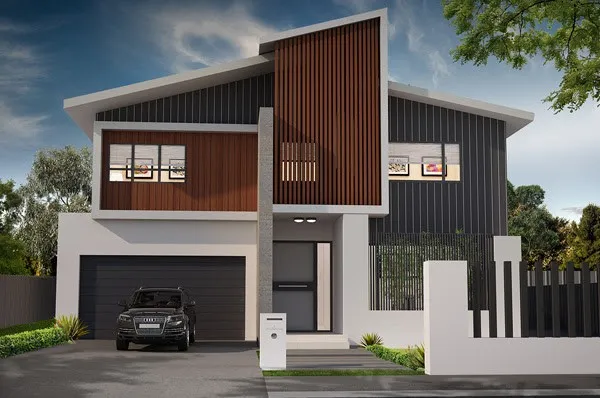
20 THINK THAT YOU NEED TO DO BEFORE
STARTING TO BUILD A NEW HOUSE

Select your builder and negotiate the terms building contract price. Remember to allow for variations and contingencies on top of the contract price.

Address any potential site drainage issues before you start building. If your building site is flat, has obvious damp patches or is located in an old suburb, it may have some storm water drainage issues and these must be dealt with before you start building your new house.
Pro-tip: Get your builder and plumbing contractor to investigate the site storm water drainage and confirm that they are both fully satisfied with the site drainage plan. If not, the drainage plan must be re-designed before going any further).
Select your builder and negotiate the terms building contract price. Remember to allow for variations and contingencies on top of the contract price.
Organise all the new site services such as sewerage, water, gas, power and Telstra / NBN, before you start building
Organise the demolition of the existing building
Pro-tip: Get at least 3 demolition quotes, quote prices can vary significantly from one demolisher to the next. Remember to allow adequate time for the tenant to move out and the abolishment of the power and gas services which can take 4 to 6 weeks.
Swimming pool shell – Most pools are located in the backyard and must be installed before the main house building is commenced so the timing of the pool shell will be critical for the house builder to get started.
If you are installing a swimming pool, you will need to organize the pool design and p ool builder in advance of the demolition.
Organize your “landscaping contractor”.
Pro-tip: Have site meeting with your landscaping contractor and your builder before any site works commence to identify who is responsible of any “grey areas” such as site drainage, fencing works, retaining walls etc.
Notify your neighbours about the upcoming demolition and building works. A simple letter drop to all your surrounding neighbours explaining what is happening will go a long way to ensuring good relationships and a smooth building process.
Review the ‘soil report” with your builder before they start the concrete footings or slab.
Pro-tip: Get your builder and plumbing contractor to investigate the site storm water drainage and confirm that they are both fully satisfied with the site drainage plan. If not, the drainage plan must be re-designed before going any further).
Notify your neighbors about the upcoming demolition and building works. A simple letter drop to all your surrounding neighbors explaining what is happening will go a long way to ensuring good relationships and a smooth building process.
Organize all the new site services such as sewerage, water, gas, power, and Telstra / NBN, before you start building
If you are building along a site boundary line, you will need to organise “protection works agreements” with the neighbouring property owner.
Select the main “living area flooring” and the toilet suites before the builder starts the concrete slab
As soon as the demolition is finished and you have a “clean site” you should get the landsurveyor to“peg out ”the property boundaries and the main“grid lines”for the new house.
Pro tip: There are more disputes between neighbours over the locationof boundary fences than any other issue, so getting a licensed land surveyor to establish the “true boundary lines” before you start building can save you a lot of stress, time and money
Organise the “consulting engineer” who has done the structural design for your house to do the initial “pre-slab building inspection” instead of the usual building surveyor. It is important to get the slab structure “spot on” from the start.
Site establishment -Before starting any building works, the builder must install all of the site facilities such as temporary fencing, site power, site toilet,safety signs and water tap.
Pro-tip: Building a proper, well-constructed, plywood hoarding around the building site has huge benefits for both the builder and the owner and starts the project off on a very positive note).
Request a copy of the “mandatory building inspection reports” from the building surveyor following each building inspection for your own records
Boundary fencing – If the existing fences need to be replaced, I recommend doing this right at the start when it is quick, easy and more economical to do so.
Boundary fencing – If the existing fences need to be replaced, I recommend doing this right at the start when it is quick,easy and more economical to do so.This can also help avoid disputes with neighbours later in theproject.
Pro-tip: Have a fortnightly site meeting with your builder so you can ask all of your questions and get regular updates from the builder.
